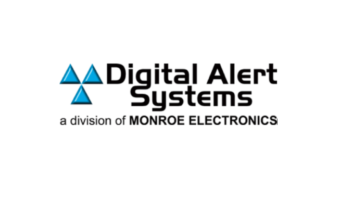The countdown toward implementation of Blue Alerts has begun.
EAS device manufacturers now have 12 months to make it possible for Blue Alerts — characterized by the three-character BLU code — to be delivered over the nation’s Emergency Alert System. It was in December that the Federal Communications Commission adopted a Report and Order that required EAS devices to have the capability to transmit the newly adopted Blue Alert code, which can be used by state and local authorities to notify the public of threats to law enforcement.
Now, with a notice filed in the Federal Register, the deadline is set for Jan. 18, 2019. (The wireless industry has a bit longer — 18 months — to ensure that a wireless alert can be delivered over the nation’s Wireless Emergency Alert system.)
What do stations need to do to prepare? Radio World spoke to two manufacturers of EAS equipment — Monroe Electronics, maker of Digital Alert Systems EAS products, and Sage Alerting Systems — to ask their opinions on what’s ahead for the broadcast industry when it comes to Blue Alerts.
Radio World: What specifically will users of alerting equipment in a station need to do to prepare to send out a Blue Alert in 2019? Are there any specific steps you know of at this time that will be required?
Harold Price, Sage Alerting Systems: The BLU alert is in the “voluntary” list, that is, it is not one of the FCC required relay alerts (EAN, NPT, RMT). Stations can elect to relay these alerts or not, with guidance from their state and local EAS plan.
Ed Czarnecki, Digital Alert Systems/Monroe Electronics: There is no obligation for EAS participants to use or even add the BLU event code — it will be voluntary among EAS participants to add the code or transmit the alert, although individual state EAS plans may provide additional local guidance or recommendations.
Radio World: What operational impact can broadcasters expect to see on their end?
Price: Handling a BLU alert will be no different operationally than relaying any other type of alert.
Czarnecki: The FCC is telling EAS manufacturers to make sure the new BLU code is included in new products shipped by the effective date, and also to furnish a software update or means for existing units to add the BLU code if they want to.
But this is the interesting point — the only entities that have been given a firm requirement, and that absolutely have to invest time and labor in supporting BLU alerts, are EAS device manufacturers.
Radio stations do not need to do anything, if they so choose. However, the reality may be that stations are asked to support BLU alerts by their local communities.
Radio World: Do you expect there to be any additional cost to stations?
Price: Sage plans to issue a free software update that will implement the BLU alert. Sage equipment users should take no action until that update is available, probably by the end of February.
Radio World: Some EAS manufacturers said that 12 months should be sufficient time to allow for the new event code to be deployed. Does this timeframe still seem reasonable?
Price: For Sage’s user base of radio and TV broadcasters, 12 months should be sufficient time to install the software update, add the BLU alert to their relay filters if they choose to relay that alert, and update their internal procedures and training.
Radio World: Is there anything else broadcasters should know about the situation?
Price: While the update and procedure changes will require some action by each station, the process is straight-forward and similar to previous new event code updates.
Czarnecki: Monroe Electronics will be adding the BLU code to an upcoming software update well before [the deadline] in Version 4.0 which is planned for release in the near future. When version 4.0 is available, we will provide an email notification to all our registered customers.
The complete Report and Order adopted in December 2017 can be found here.











